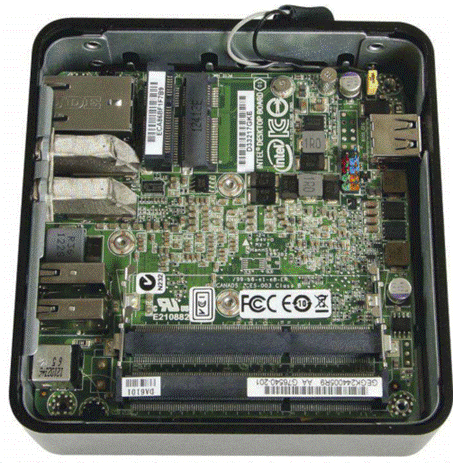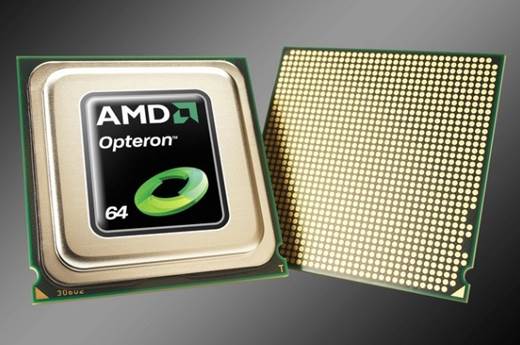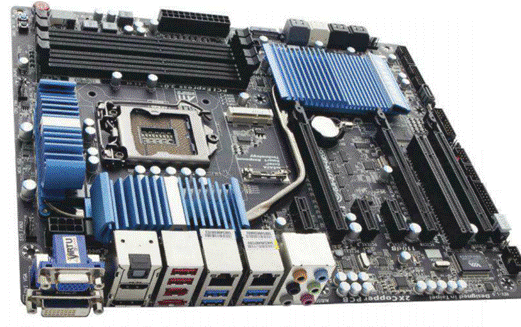John Gillooly looks at rumours Intel
is abandoning socketed CPUs, and what this means for the future of the desktop
There has been a lot of talk in recent
times about Intel moving away from the socketed CPU model that underpins most desktop
computing. While this has since been denied, and we have it on good authority
that socketed CPUs are here to stay for the next four or five years at least,
it does give an insight into the changing nature of PC design.
In the era of the Pentium 4 and its
predecessors, CPUs were designed for desktop use and then scaled back to use
less power in laptops. This led to architecture that was unwieldy for mobile,
designed to flourish when tethered to mains power, but out of its element when
in a device that ran on batteries.

There
has been a lot of talk in recent times about Intel moving away from the
socketed CPU model that underpins most desktop computing.
With the shift to the Core line of CPUs,
Intel began to flip this design model on its head. CPUs (and accompanying
chipsets) were built around efficient mobile use first and foremost. The design
was then scaled up to work within a higher TDP (Thermal Design Potential),
drawing more power for desktop use.
What this has led to is the modern era,
where the Core I CPU lineup spans everything from power-sipping 17W versions in
Ultrabooks, 77W desktop variants and the 130W Sandy Bridge Extreme CPUs.
But it isn't just the CPUs that have
changed dramatically in recent years, there has also been a popularity shift in
desktop computing from towers to All- In-Ones. Most All-In-Ones actually use
mobile componentry in order to keep temperatures and product sizes down. This,
more than anything, is blurring the line between mobile and desktop computing.
This brings us back to the recent debate
over Socketed CPUs vs those soldered to the motherboard using a mounting
technique called BGA (Ball Grid Array). BGA is more electrically efficient than
LGA (Land Grid Array the name for the socket design used by Intel). It also makes
for a thinner overall construction by not having to incorporate the socket, the
CPU is closer to the motherboard. This may not seem like much, but it is thanks
to little things like this that devices as thin as tablets and Ultrabooks can
exist.
When we are talking about computing
platforms like All-In-Ones that have limited upgradeability, there are enormous
advantages and virtually no downsides to using BGA. In desktops, however, the
socketed CPU is at the very heart of the design, and the ability to upgrade a
CPU is one of the core parts of the PC as we know it.
The Reality
There are several quite persuasive
arguments that this desire for socketed CPUs is an after act of days gone by.
Because CPU design has an increasingly mobile focus, the actual performance
leaps delivered by new generations on the desktop aren't as dramatic as they
once were, This means that there is very little to be gained by upgrading every
generation; even traditional drivers of hardware performance, like games, work
fine on CPUs from four or five years ago.
Remove this generational upgrading and you
lose a lot of the benefits from socketed CPU design. While AMD has shown more
consistency and longevity in its sockets, Intel has a habit of changing socket
designs with every couple of generations. This means that a modern CPU upgrade
almost inevitably means a new motherboard as well.

While
AMD has shown more consistency and longevity in its sockets, Intel has a habit
of changing socket designs with every couple of generations.
Once you factor this in, then the shift to
EGA processors doesn't seem as much of a precursor to end times. If anything,
for the consumer such a move would be largely transparent. The real impact
would be felt by the manufacturers, distributors and retailers who would be
stuck having to manage stock of the newly united products.
That said, Intel is not just going to hand
over the existing desktop CPU market to AMD while it chases the integrated one.
It just makes good corporate sense to keep serving the socketed CPU market
while said market brings in lots and lots of cash each year. While there may be
a growth of All-In- Ones and a shift to laptops going on in places like
Australia and the USA, in the really big potential computing markets like
China, Russia and Brazil there is a growing demand for traditional desktop PCs.
The Chipset
From reading between the lines, one of the
biggest influencers on the rumours of a move away from the current desktop PC
design is that chipset development is stagnating. Over the past 15 or so years
chipsets have evolved significantly. This has largely been due to the slow
rollout of technologies designed to scale into the future. We've seen USB
replace serial, parallel and PS2 ports in the connection space, PCI-Express
replace ISA, PCI and AGP as an internal interconnect and Serial ATA has
overtaken Parallel ATA as a drive connection.
With these technologies now in place, and
the latest Intel chipsets now featuring USB 3 and SATA 6Gbps, there isn't a
hell of a lot left to add to chipsets. When you factor in the move of things
like PCI-Express control from the chipset into the CPU, then the current
situation where new CPUs and new chipsets emerge hand in hand just isn't
sustainable.

With
these technologies now in place, and the latest Intel chipsets now featuring
USB 3 and SATA 6Gbps, there isn't a hell of a lot left to add to chipsets.
This migration of technology onto the CPU
is going to continue, with Intel's next generation Haswell CPU expected to
natively support the Thunderbolt technology that is common on Apple's products
and starting to pop up on the PC. If Intel manages to push the chipset into
irrelevance, then the need for regular motherboard releases will dry up, and
just soldering a CPU straight onto the board becomes a much more viable
solution.
This isn't going to happen in the immediate
future, however. Haswell with bring with it a new, 1150 pin socket, and will
bring with it a new chipset (the name hasn't been announced but we suspect it
will be called Z87). This in turn will mean the usual assortment of new
motherboards alongside the new CPU, and this trend should continue for several
generations.
Nuc
That isn't to say that we won't be seeing
EGA creep onto the desktop. One of the most fascinating products to enter our
testing labs in the past month has been Intel's Next Unit of Computing (NUC).
This is a small box that features a 17W Core i3-3217U CPU soldered onto a
motherboard that features a QS77 chipset. It has two SODIMM memory slots and
two mini PCI-E slots (one half- height, designed for a wireless card, and the
other full-length and capable of taking an mSATA SSD).
While the NUC is limited in its
upgradeability, it can be used as a perfectly capable low-end PC. Effectively
it is the guts of an Ultrabook in desktop form, and while the currently
available model is only a Core-i3, there are plans to follow a 'good, better,
best' approach to the NUC and release models next year with both Core iS and
Core i7 versions.
Those with serious computing demands are
going to want to stick with the traditional desktop for now, and gamers
especially aren't ready for a move to an entirely Intel world (although if it
can continue to improve its GPU design, then an NUC using the next generation
Haswell CPU could be a viable console replacement for the casual gamer). But
for the average user who wants to consume on a platform more flexible than a
tablet it could be a great, low-cost godsend, and a viable competitor to the
All-In-One.